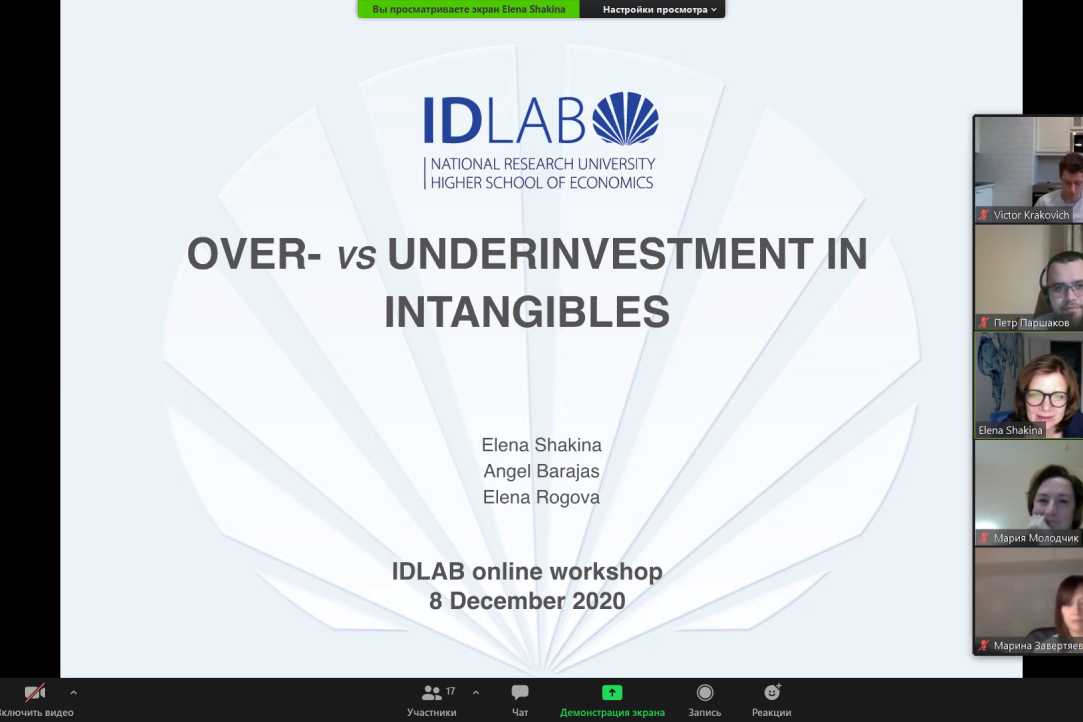ID Lab ONLINE Workshop
Elena Shakina presented the updated research results on the optimal level of the company's investment in intellectual resources

Intangibles being considered pivotal sources of companies’ successful strategies have ambiguous nature, nonetheless. The literature suggests multiple reasons for intangibles contributing to better performance and competitiveness (Delbecque et al., 2015; Marr, 2005; Shakina and Barajas, 2015). Meanwhile, not that much origins of their non-optimal usage of intangibles have been discussed so far. However, intangibles similar to any other companies’ resources must be gauged and precisely budgeted to bring expected return over direct and opportunity costs. Non-optimality of investments is a widely studied phenomenon. Two principal roots are usually mentioned when either under- or overinvestment takes place: bounded rationality (Navissi et al., 2016) or, so called, asset specificity theory (Yan and Yuan, 2010). Both issues refer to a special importance when it comes to intangibles. Both approaches assert that only optimally compounded resource portfolio might bring competitive advantages and thereby enable value creation. However, this issue is still understudied in the literature. We came up with this paper to examine whether underinvestment as well as overinvestment in intangibles takes place and whether that could be empirically captured.Thus, this study looks for an empirical evidence of an optimal intangible resource portfolio by finding out two-sided deviation of intangible endowment from the median value and its impact on value creation.
